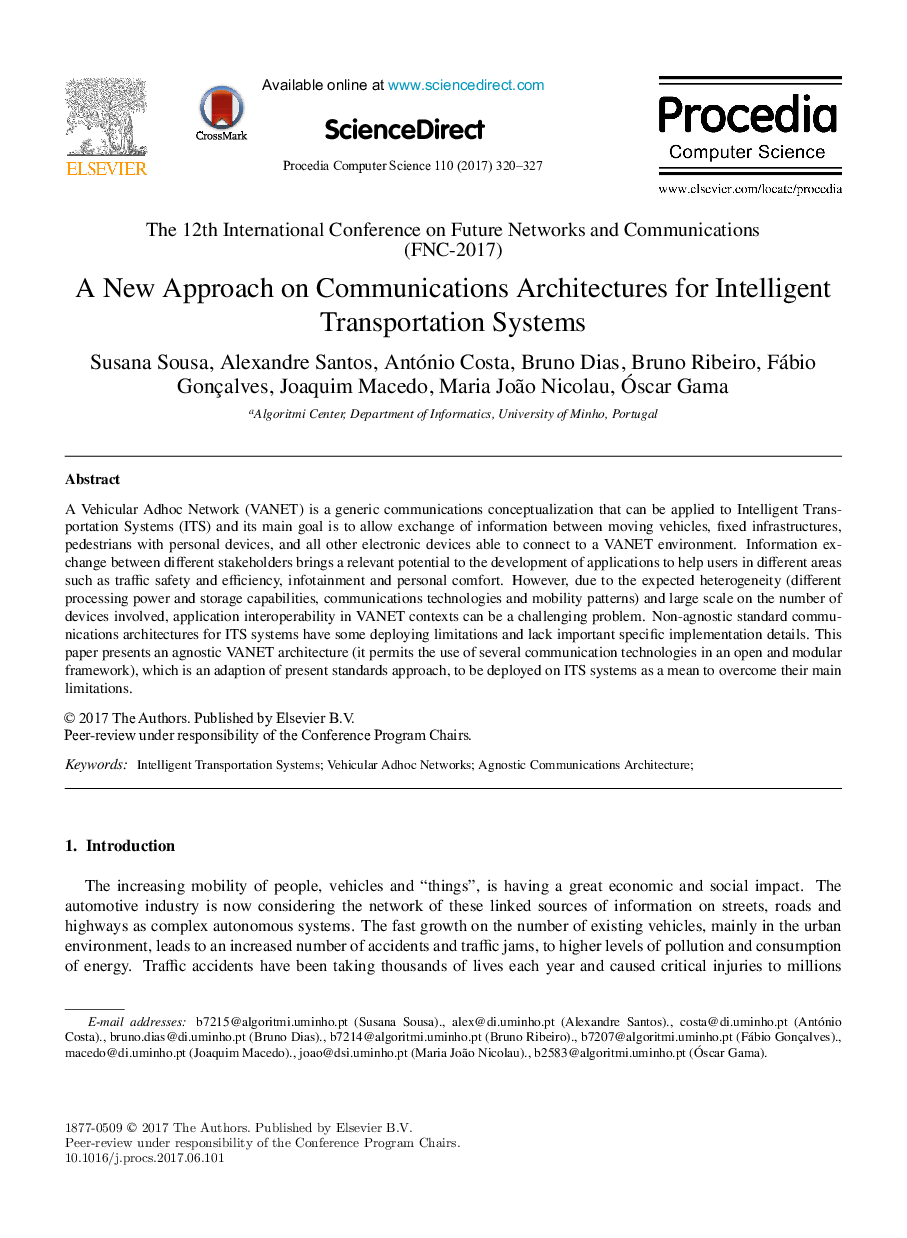| Article ID | Journal | Published Year | Pages | File Type |
|---|---|---|---|---|
| 4960828 | Procedia Computer Science | 2017 | 8 Pages |
A Vehicular Adhoc Network (VANET) is a generic communications conceptualization that can be applied to Intelligent Transportation Systems (ITS) and its main goal is to allow exchange of information between moving vehicles, fixed infrastructures, pedestrians with personal devices, and all other electronic devices able to connect to a VANET environment. Information exchange between different stakeholders brings a relevant potential to the development of applications to help users in different areas such as traffic safety and efficiency, infotainment and personal comfort. However, due to the expected heterogeneity (different processing power and storage capabilities, communications technologies and mobility patterns) and large scale on the number of devices involved, application interoperability in VANET contexts can be a challenging problem. Non-agnostic standard communications architectures for ITS systems have some deploying limitations and lack important specific implementation details. This paper presents an agnostic VANET architecture (it permits the use of several communication technologies in an open and modular framework), which is an adaption of present standards approach, to be deployed on ITS systems as a mean to overcome their main limitations.
